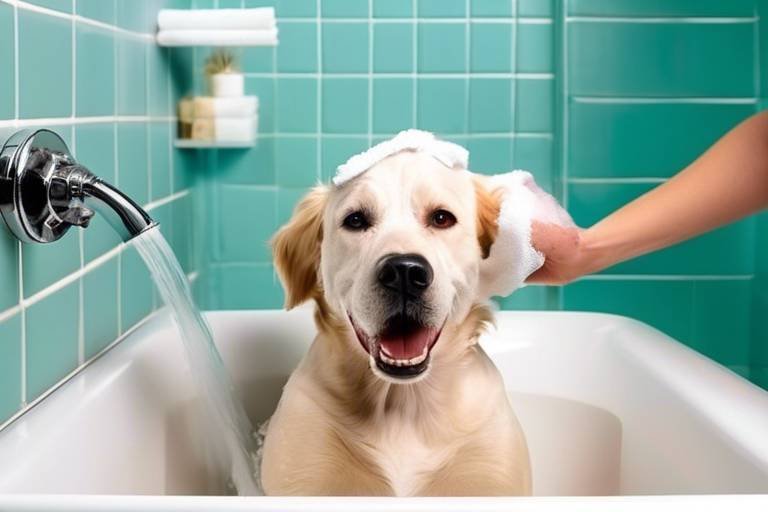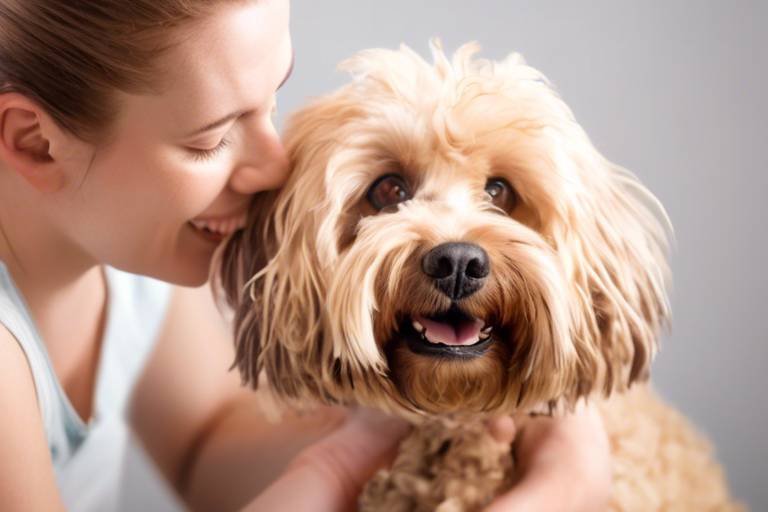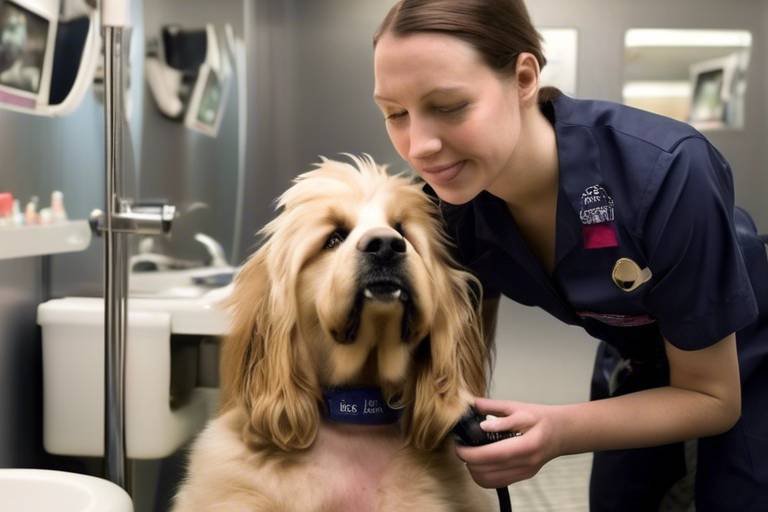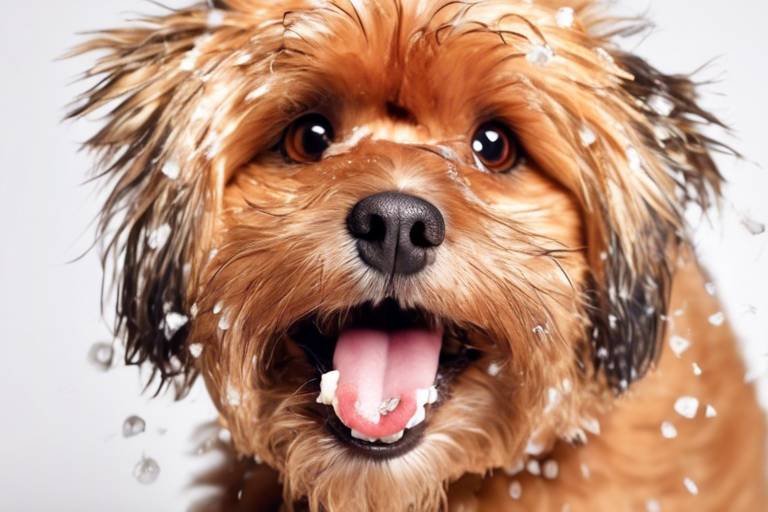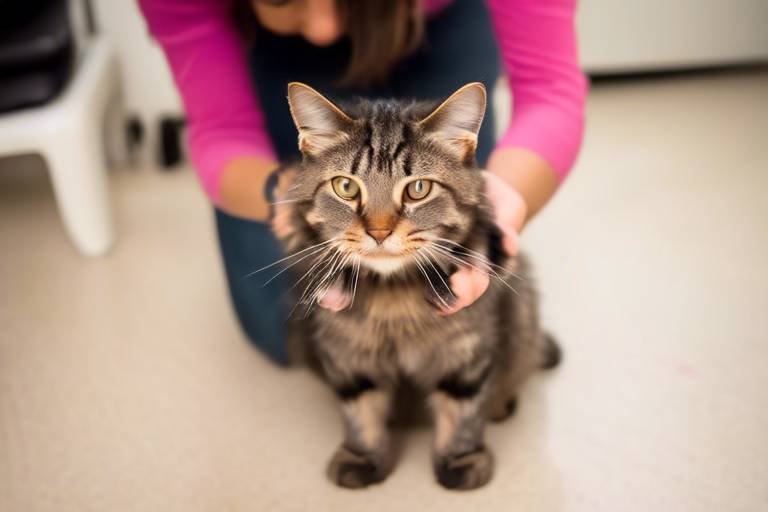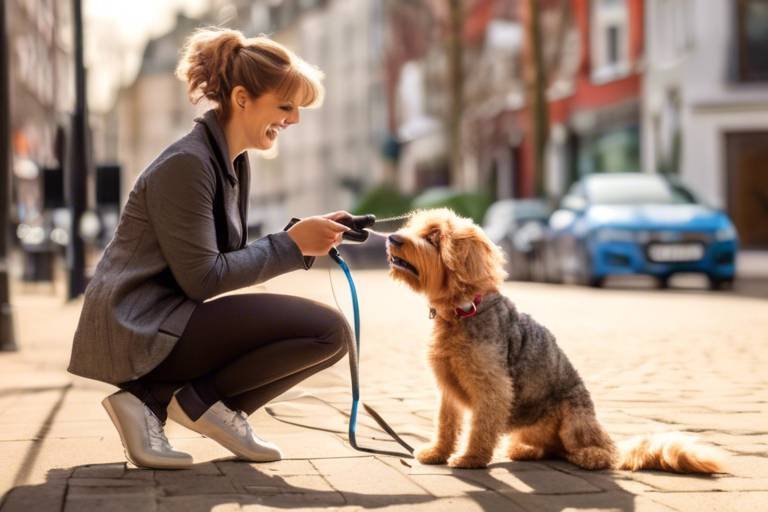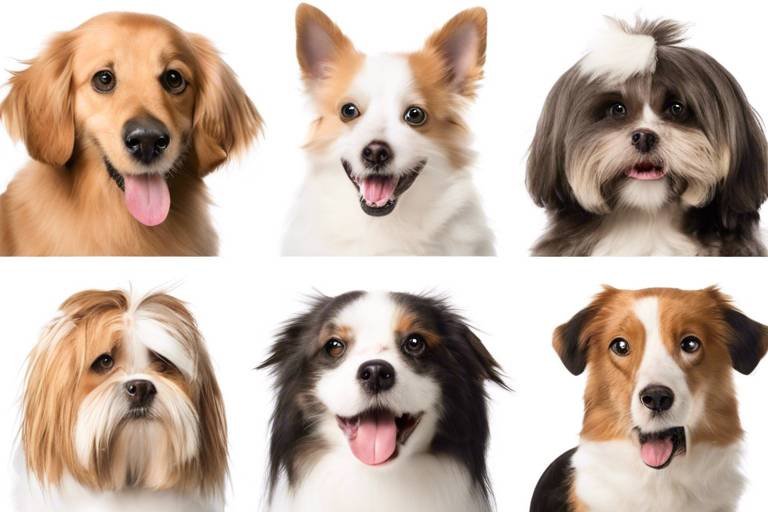Tips for Grooming Dogs with Long Nails
Grooming your dog's nails can sometimes feel like a daunting task, especially when those nails are longer than you'd like. But don't fret! With the right techniques and a little patience, you can turn this chore into a manageable routine that benefits both you and your furry friend. Long nails can be uncomfortable for your dog, leading to pain, mobility issues, and even injuries. So, it's crucial to prioritize their nail care and ensure their comfort and well-being. In this article, we will explore essential tips and techniques for safely grooming dogs with long nails, ensuring that the process is as smooth as possible.
Did you know that regular nail grooming is not just a cosmetic concern? It's a vital part of your dog's overall health. Long nails can cause a range of problems, from painful splaying of the toes to difficulty walking. Imagine trying to walk in shoes that are two sizes too big; that's how your dog feels when their nails are left unchecked. By keeping their nails trimmed, you can help prevent injuries and promote better mobility. It's not just about aesthetics; it's about ensuring your dog is happy and healthy!
Before you dive into the grooming process, it's essential to gather the right tools. Having the proper equipment can make a world of difference in ensuring a safe and efficient grooming experience. Here’s a quick rundown of the must-have tools:
- Nail Clippers: Choose between guillotine or scissor-style clippers based on your dog's size.
- Nail Grinders: These are great for smoothing out rough edges and are especially useful for nervous dogs.
- Styptic Powder: This is a lifesaver in case you accidentally cut the quick, as it helps stop any bleeding.
Selecting the right nail clippers is critical for both your comfort and your dog's safety. There are several types available, each suited for different nail sizes and thicknesses. For example, guillotine-style clippers are generally great for small to medium dogs, while scissor-style clippers offer better leverage for larger breeds. The key is to find a pair that feels comfortable in your hand and is easy to use. Remember, the right tools can make the grooming process much smoother!
Guillotine-style clippers are fantastic for achieving a clean cut without crushing the nail. They work by sliding the nail into a small opening and squeezing the handle to cut through. This method is particularly effective for smaller breeds, and with the right technique, you can ensure a quick and painless grooming experience.
If you have a larger dog, scissor-style clippers might be your best bet. They provide better leverage and control, making it easier to trim thicker nails. However, it’s essential to have a steady hand to prevent any accidental injuries. Practice makes perfect, so don’t get discouraged if it takes a few tries to get the hang of it!
Nail grinders are becoming increasingly popular among pet owners. They offer a smooth finish and significantly reduce the risk of splitting nails, making them an excellent choice for dogs that may be nervous about clippers. If your dog is particularly skittish, a grinder could be the answer to your grooming woes. Just remember to introduce it slowly, as the sound and vibration can be startling at first.
Preparation is key when it comes to grooming your dog’s nails. A calm and relaxed environment can make all the difference in ensuring a smooth grooming session. Take the time to familiarize your dog with the tools you'll be using. You might even want to let them sniff the clippers or grinder to reduce their anxiety. Creating a positive atmosphere will help your dog associate nail grooming with a pleasant experience.
Desensitization is an effective method for helping your dog get used to the grooming process. Start by gradually introducing them to the clippers or grinder, allowing them to explore the tools without any pressure. Reward them with treats and praise to create a positive association. Over time, your dog will become more comfortable, and the grooming process will be much easier for both of you.
Timing is everything when it comes to nail grooming. It’s best to choose a moment when your dog is already calm and relaxed. This could be after a long walk or playtime when they’re ready to wind down. By picking the right moment, you can help ensure a smoother grooming experience.
Now that you have your tools and your dog is prepared, it's time to dive into the actual grooming process. Following a systematic approach can enhance safety and efficiency, making the experience enjoyable for both you and your furry friend.
Proper positioning is key to effective nail grooming. Whether your dog is sitting or lying down, make sure they are comfortable and secure. You might even want to have someone help hold your dog still, especially if they are a bit wiggly. This way, you can focus on the task at hand without any distractions.
When it comes to trimming, using the right techniques can prevent injury. Focus on making small cuts and always be cautious of the quick—the sensitive part of the nail that can bleed if cut. Keeping your cuts small and gradual will help ensure a pain-free experience for your dog. Remember, patience is key!
After grooming, it’s essential to check your dog's nails and paws for any injuries. Always inspect for signs of bleeding or discomfort, and address any issues promptly. Additionally, maintaining your dog’s nail health is crucial. Regular grooming schedules and using paw balm can help prevent cracking and discomfort, keeping those paws in tip-top shape!
Always take a moment to inspect your dog's nails and paw pads after grooming. Look for any signs of injury or discomfort, and don’t hesitate to reach out to your vet if something seems off. Your dog's well-being is the top priority, and being proactive can save you a lot of trouble down the line.
Regular maintenance is key to keeping your dog's nails healthy. Establishing a grooming schedule can help keep their nails in check, preventing them from becoming overly long again. Additionally, consider using a paw balm to keep their paw pads moisturized and protected from the elements. Just like our skin, their paws need care too!
Q: How often should I trim my dog's nails?
A: It depends on your dog's activity level and lifestyle, but generally, every 3-4 weeks is a good rule of thumb.
Q: What if my dog won't let me touch their paws?
A: Patience and positive reinforcement are key. Start by gently handling their paws during playtime and rewarding them with treats.
Q: Can I use human nail clippers on my dog?
A: While it’s possible, it's not recommended. Dog nail clippers are specifically designed to handle the thickness and texture of canine nails.
Q: What should I do if I accidentally cut the quick?
A: Apply styptic powder immediately to stop the bleeding and keep your dog calm. If the bleeding doesn’t stop, contact your vet.
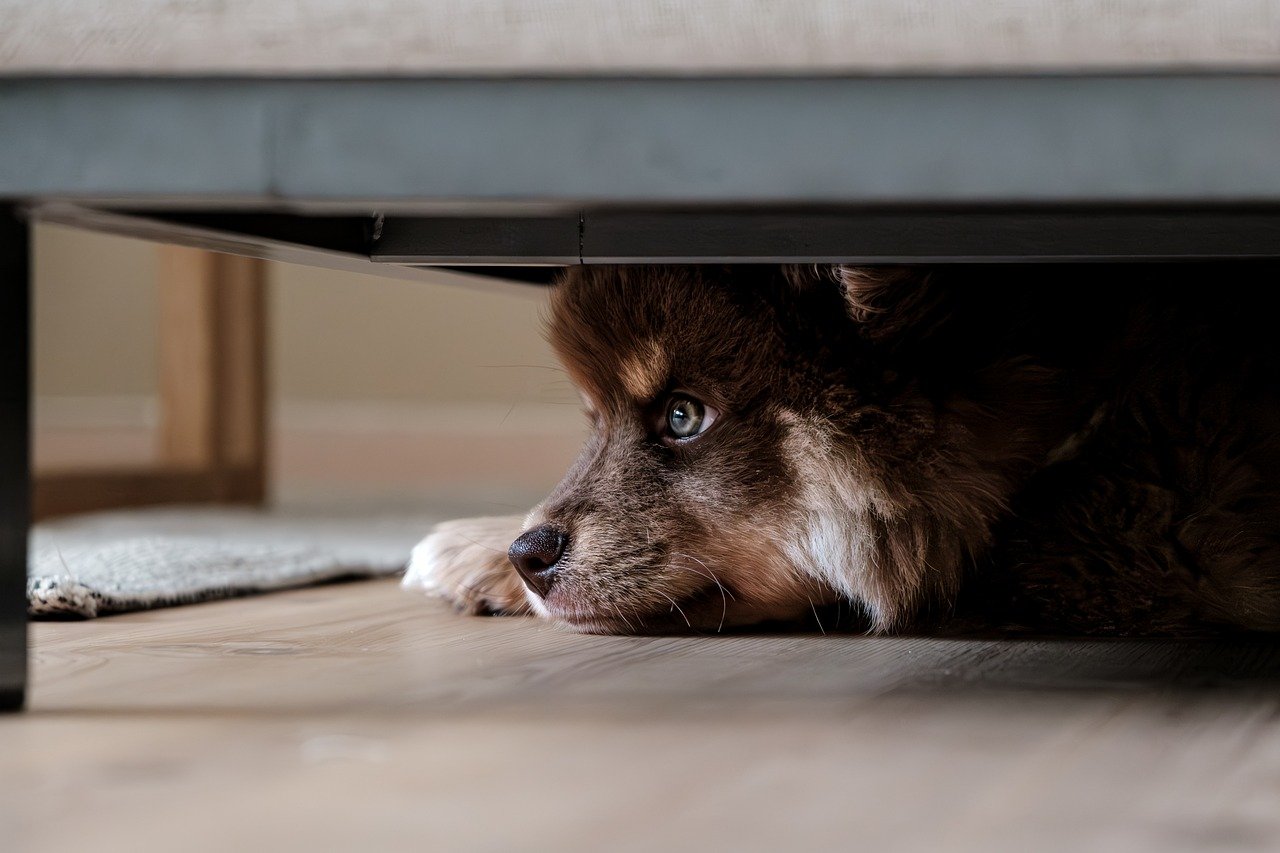
Understanding the Importance of Nail Care
When it comes to our furry companions, nail care is often overlooked, yet it plays a crucial role in their overall health and happiness. Just like us, dogs need regular grooming to keep their nails at a healthy length. Long nails can lead to a variety of problems that can affect your dog's quality of life. Imagine trying to walk with shoes that are two sizes too big; that’s how your dog feels with long nails!
One of the primary issues caused by long nails is pain. As nails grow, they can curl and press against the paw pads or even cause misalignment in the toes. This can lead to discomfort and pain, making it difficult for your dog to walk or run. Over time, this discomfort can escalate into chronic pain, leading to mobility issues that can make your dog less active and more lethargic.
In addition to pain, long nails can also lead to injuries. Dogs are naturally active and love to explore their surroundings. When their nails are too long, they are more prone to snagging on surfaces, which can result in painful tears or breaks. This not only causes immediate pain but can also lead to infections if not treated promptly. Think of it this way: would you want to run around with a broken nail? Your dog certainly wouldn’t!
Moreover, long nails can affect your dog's posture and gait. When a dog's nails are too long, they might change the way they walk to avoid pain, which can lead to additional strain on their joints and muscles. Over time, this can result in serious health issues, including arthritis. It’s a vicious cycle that starts with something as simple as nail care!
To put it simply, regular nail grooming is essential for:
- Preventing pain and discomfort
- Avoiding injuries and infections
- Maintaining proper posture and mobility
- Enhancing overall well-being and happiness
So, how do you ensure your dog’s nails are kept in check? Regular grooming sessions, whether you do it yourself or take them to a professional, are key. By making nail care a priority, you’re not just keeping your dog's nails short; you’re also contributing to their overall health and happiness. Remember, a happy dog is a healthy dog!

Tools You Will Need
When it comes to grooming your dog's nails, having the right tools on hand can make all the difference. Just like a chef needs sharp knives to create a culinary masterpiece, you need the proper grooming tools to ensure your furry friend's nails are trimmed safely and effectively. Let's dive into the essential tools you should gather before starting the grooming process.
First and foremost, you will need a good pair of nail clippers. There are various types available, and choosing the right one is crucial for both your comfort and your dog's safety. Guillotine clippers are great for small to medium-sized dogs, offering a clean cut without crushing the nail. On the other hand, scissor-style clippers are ideal for larger breeds, providing better leverage and control. It's essential to select the clipper that best suits your dog's nail size and thickness to prevent any accidents.
In addition to clippers, consider investing in a nail grinder. This tool is particularly useful for dogs that may be anxious about clippers. Nail grinders smooth out the edges after trimming, reducing the risk of splitting the nails and providing a polished finish. Many dogs find grinders less intimidating than traditional clippers, making them a popular choice among pet owners.
Don't forget to have some styptic powder on hand as well. This powder is a lifesaver in case you accidentally cut too close to the quick, which is the sensitive part of the nail. Styptic powder helps stop any bleeding quickly and effectively, ensuring your dog's comfort and safety during the grooming process.
Lastly, a comfortable and secure grooming area is essential. You might want to lay down a non-slip mat to prevent your dog from sliding around, which can create anxiety for both of you. Having treats nearby can also help reward your dog for their patience and cooperation, turning nail grooming into a more positive experience.
Here's a quick summary of the essential tools you will need:
| Tool | Description |
|---|---|
| Nail Clippers | Essential for trimming your dog's nails. Choose between guillotine or scissor-style based on your dog's size. |
| Nail Grinder | An alternative to clippers that smooths the nail edges and reduces the risk of splitting. |
| Styptic Powder | Stops bleeding in case of accidental cuts to the quick. |
| Comfortable Grooming Area | A secure space with non-slip mats and treats to make the process easier. |
By gathering these tools, you’ll set yourself up for a successful and stress-free grooming session. Remember, the right tools not only make the job easier but also help ensure your dog's comfort and safety throughout the process. So, take a moment to gather everything you need before diving into the nail grooming adventure!
Choosing the Right Nail Clippers
When it comes to grooming your furry friend, can make all the difference. Just like picking the perfect pair of shoes, the right clippers should feel comfortable, safe, and efficient for both you and your dog. There are several types of nail clippers available, each designed to cater to specific needs and preferences. Understanding these options can help you make an informed decision that ensures a smooth grooming experience.
First off, let's talk about the two most common types of nail clippers: guillotine style and scissor style. Each has its own set of advantages and is suited for different sizes and thicknesses of nails. For instance, guillotine clippers are often favored for small to medium dogs because they provide a clean cut without crushing the nail. This design allows you to see exactly where you're cutting, which can help prevent any accidental injuries. On the other hand, scissor-style clippers are generally better for larger breeds. They offer greater leverage and control, making it easier to trim thicker nails. However, they do require a steady hand and some practice to master.
Here’s a quick comparison to help you visualize:
| Type of Clipper | Best For | Pros | Cons |
|---|---|---|---|
| Guillotine Style | Small to Medium Dogs | Clean cut, easy to use | Can be difficult for thick nails |
| Scissor Style | Large Breeds | Better leverage, control | Requires steady hands, risk of crushing |
Another option to consider is the nail grinder, which is a fantastic alternative to traditional clippers. Grinders work by sanding down the nail rather than cutting it, which can provide a smoother finish and reduce the risk of splitting or cracking. This can be particularly helpful for dogs that are nervous about the clipping process, as the gentle buzzing sound of a grinder may be less intimidating than the snip of clippers.
Ultimately, the choice of nail clippers should be based on your dog's size, nail thickness, and their individual temperament. Don’t hesitate to try out different types to see which one works best for you and your pup. Remember, a comfortable and safe grooming experience will make nail care a lot easier and more enjoyable for both of you!
Guillotine Style Clippers
When it comes to grooming your furry friend, are a fantastic option, especially for small to medium dogs. These clippers are designed to provide a clean cut without crushing the nail, which is crucial for your dog’s comfort. Imagine trying to clip your nails with a dull blade—it’s uncomfortable, right? That’s why using the right tool matters! The guillotine design features a blade that slides down as you squeeze the handle, effectively cutting through the nail with precision.
One of the greatest advantages of guillotine clippers is their ease of use. They allow for a quick and efficient trimming process, which is essential when you have a wiggly pup on your hands. However, it's important to use them correctly to avoid any mishaps. Always ensure that the nail is positioned properly within the clipper's opening, and apply gentle pressure to avoid causing pain. Also, keep an eye out for the quick, the sensitive part of the nail that can bleed if cut too short. If you’re unsure where the quick ends, it’s best to trim just a little at a time and check your dog's comfort level.
To help you choose the right guillotine clippers for your dog's needs, consider the following factors:
- Size: Ensure the clippers are appropriate for your dog's size. Larger clippers may not be effective on small nails and vice versa.
- Comfort: Look for clippers with ergonomic handles that provide a good grip, making it easier to control while grooming.
- Blade Quality: High-quality blades will ensure a clean cut and reduce the risk of splitting nails.
In addition to these features, it’s wise to read reviews or ask fellow dog owners for recommendations. Investing in a good pair of guillotine clippers can make the grooming process much smoother and more enjoyable for both you and your dog. Remember, a positive grooming experience not only keeps your dog's nails healthy but also strengthens the bond between you two. So, get ready to tackle those long nails with confidence!
Q1: How often should I trim my dog's nails?
A1: It's generally recommended to trim your dog's nails every 3-4 weeks, but this can vary based on their activity level and lifestyle.
Q2: What should I do if I accidentally cut the quick?
A2: If you accidentally cut the quick and it bleeds, use styptic powder to stop the bleeding. Apply it directly to the nail and apply gentle pressure.
Q3: Can I use human nail clippers on my dog?
A3: While it’s possible, it's not recommended. Dog nail clippers are specifically designed to handle the thickness and structure of canine nails.
Q4: What if my dog is scared of nail clippers?
A4: Gradually desensitize your dog to the clippers by letting them sniff and explore the tools before the actual grooming session. Offering treats during the process can also help.
Scissor Style Clippers
When it comes to grooming your furry friend, scissor-style clippers are a fantastic choice, especially for larger breeds. These clippers are designed to provide better leverage and control, allowing you to make precise cuts without the risk of crushing the nail. Think of them as the scissors of the dog grooming world—just like how you wouldn't use a dull knife for a delicate dish, you want the right tool for the job to ensure a smooth experience for both you and your pet.
One of the key benefits of using scissor-style clippers is the comfort they provide. The ergonomic design allows for a natural hand position, reducing strain during the grooming process. This is particularly important when you're dealing with a wiggly pup who might not be too keen on having their nails trimmed. You want to create a calm environment, and having the right tools can make all the difference. Imagine trying to cut a piece of paper with a pair of rusty scissors; it’s frustrating and ineffective. The same goes for grooming your dog's nails.
However, it's crucial to handle these clippers with care. A steady hand is essential to prevent any accidental injuries. Here are a few tips to keep in mind:
- Always position your dog comfortably, ensuring they feel secure while you work.
- Start with small, gentle cuts to avoid hitting the quick, which is the sensitive part of the nail.
- Take breaks if your dog seems anxious; patience is key!
Another advantage of scissor-style clippers is their versatility. They can be used on different nail sizes, making them a great investment if you have multiple pets or plan to groom dogs of various breeds. However, it’s important to choose a pair that is specifically designed for the size of your dog’s nails. For instance, a pair meant for small dogs might not be effective for a Great Dane. Always check the manufacturer's guidelines to ensure you’re getting the right tool.
To sum it up, scissor-style clippers offer a blend of control, comfort, and versatility, making them an excellent option for grooming your dog's nails. Just remember to stay calm and patient, as this will help your dog feel more at ease during the grooming process. With the right technique and tools, nail trimming can be a stress-free experience for both you and your furry friend!
Here are some common questions pet owners have about grooming their dog's nails:
- How often should I trim my dog's nails? It’s generally recommended to trim your dog's nails every 3-4 weeks, but this can vary depending on their activity level and the surfaces they walk on.
- What if I accidentally cut the quick? If you accidentally cut the quick, apply styptic powder immediately to stop the bleeding and soothe the area. Keep your dog calm and avoid further stress.
- Can I use human nail clippers on my dog? While it's possible, it's not recommended. Dog nail clippers are specifically designed for the shape and thickness of canine nails, making them safer and more effective.
Nail Grinders: An Alternative Option
Nail grinders have become increasingly popular among pet owners as an effective alternative to traditional nail clippers. If you've ever worried about the potential for cutting too close to the quick with clippers, a nail grinder might just be the solution you've been searching for. These handy tools work by gently sanding down the nail instead of cutting it, which offers a safer and smoother finish. This method not only reduces the risk of splitting nails but also helps to avoid the discomfort that can sometimes occur during the clipping process.
Many dogs, especially those who are a bit more anxious or skittish, tend to respond better to nail grinders. The gradual grinding motion can be less intimidating than the sudden snip of clippers. It's like trading in a loud, startling chainsaw for a gentle, buzzing massage! However, just as with clippers, it's essential to introduce your dog to the grinder slowly. Start by letting them sniff the tool and get accustomed to the sound it makes before you even think about using it. This desensitization process is crucial for a stress-free grooming experience.
When choosing a nail grinder, consider the following features:
- Speed Settings: Some grinders come with multiple speed settings, allowing you to adjust the speed based on your dog's comfort level.
- Battery vs. Corded: Decide whether you prefer the convenience of a cordless grinder or the reliability of a corded model.
- Noise Level: Look for models that operate quietly, as a noisy grinder can scare your dog.
It's also important to note that while nail grinders are fantastic tools, they do require a bit of technique. You want to hold the grinder at the right angle and apply gentle pressure to avoid causing discomfort. It’s a bit like learning to play an instrument; it may take some practice, but once you get the hang of it, you'll be a pro in no time!
In conclusion, nail grinders present a versatile and effective option for grooming your dog's nails. They not only help in achieving a smooth finish but also promote a more positive grooming experience for your furry friend. Just remember to take your time, be patient, and make the process a fun bonding activity with plenty of treats and praise!
Here are some common questions pet owners have about nail grinders:
- Are nail grinders safe for all dogs? Yes, nail grinders are generally safe for all dogs, but it's essential to introduce them gradually and monitor your dog's comfort level.
- How often should I use a nail grinder? Depending on your dog's activity level and nail growth, it’s recommended to grind their nails every 2-4 weeks.
- Can I use a regular nail grinder for my dog? It's best to use a grinder specifically designed for pets, as they are made to handle the density of dog nails and often have safety features.
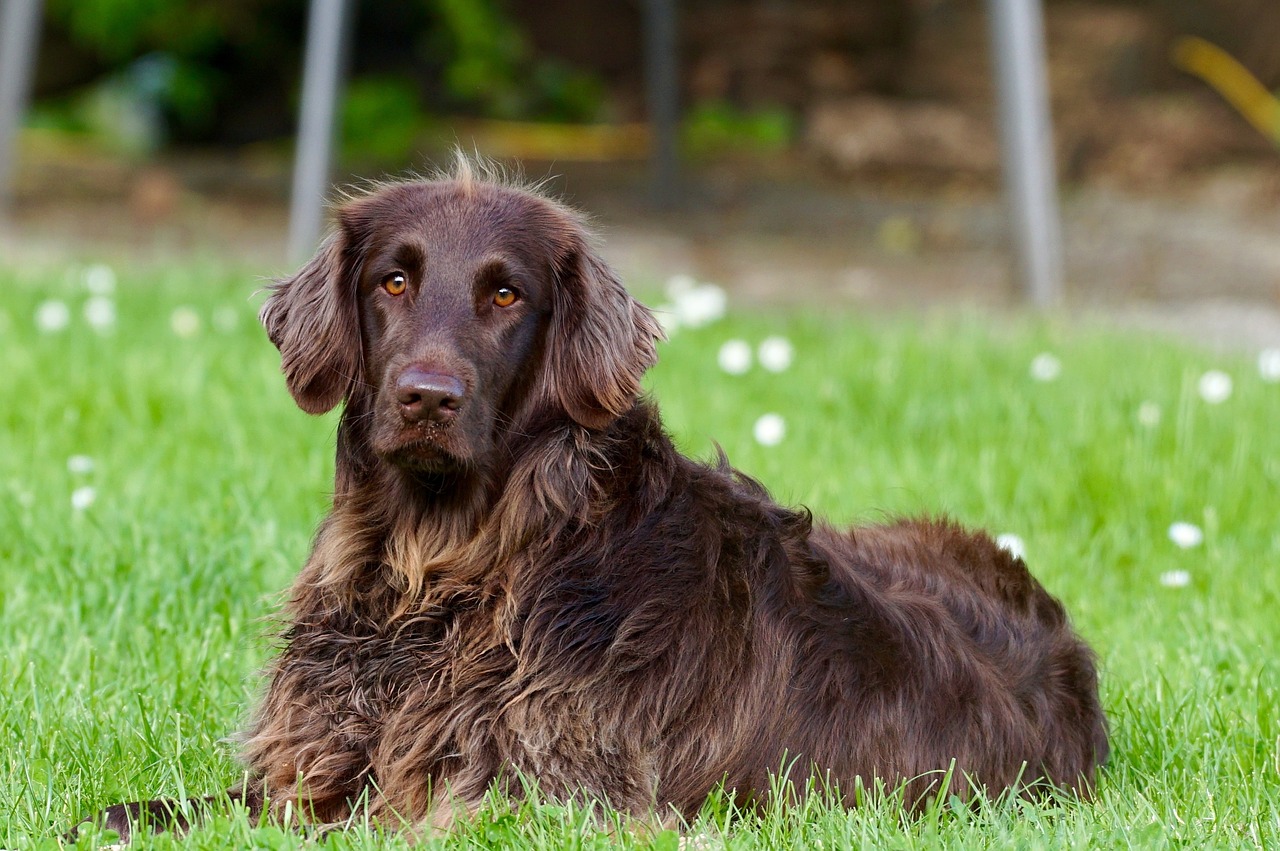
Preparing Your Dog for Grooming
When it comes to grooming your dog, especially when dealing with those long nails, preparation is absolutely key. Think of it as setting the stage for a performance; if everything is in place, the show will go off without a hitch! First things first, you want to create a calm and inviting environment for your furry friend. This means finding a quiet space where they feel safe and comfortable. Maybe it's their favorite spot on the couch or a cozy corner in the living room. The goal is to reduce any anxiety they might have about the grooming process.
Another essential step in this preparation phase is familiarizing your dog with the tools you’ll be using. Dogs are naturally curious creatures, so why not turn this into a fun game? Let them sniff the clippers or grinders and reward them with treats for being brave. This helps associate the tools with positive experiences, making them less intimidating. You can even take it a step further by just letting your dog see you using the tools on a toy or a soft surface. This creates a sense of familiarity and comfort.
Timing is also crucial when preparing your dog for grooming. You wouldn’t want to try and perform surgery on a patient who just chugged a gallon of coffee, right? Similarly, aim to groom your dog when they are calm and relaxed. This could be after a nice long walk or play session when they’re more likely to be tired and less fidgety. Trust me, this makes the entire process smoother for both of you!
In addition to creating a calm environment and timing your grooming sessions, consider employing desensitization techniques. This involves gradually introducing your dog to the clippers or grinders over several days. Start by simply showing them the tools without using them, then gradually progress to turning them on while giving treats. This slow introduction helps your dog build trust and reduces any fear associated with the grooming process.
To sum it all up, preparing your dog for grooming involves creating a peaceful atmosphere, familiarizing them with the grooming tools, choosing the right time, and using desensitization techniques. By taking these steps, you’re setting both yourself and your dog up for a successful grooming experience. Remember, grooming should be a bonding time, not a battle!
- How often should I groom my dog's nails? Ideally, you should check your dog's nails every 3-4 weeks and trim them as needed.
- What if my dog is afraid of nail clippers? Try desensitization techniques, and consider using a nail grinder as a more gentle alternative.
- Can I use human nail clippers on my dog? It's best to use clippers specifically designed for dogs to avoid injury and discomfort.
- What should I do if I accidentally cut the quick? Apply styptic powder to stop the bleeding and consult your vet if the bleeding doesn't stop.
Desensitization Techniques
Desensitization is a powerful technique that can transform your dog’s grooming experience from a stressful ordeal into a calm and enjoyable one. It’s all about gradually introducing your dog to the tools and sounds associated with nail grooming. Start by simply letting your dog sniff the clippers or grinder without any pressure to use them. This initial step helps your furry friend associate the tools with positive experiences rather than fear.
Next, you can reward your dog with treats and praise every time they show curiosity towards the grooming tools. This positive reinforcement is key; it builds a connection in their mind between the tools and something they love—like tasty treats! You might say, “Good boy!” or “What a brave girl!” while giving them a small treat. Over time, your dog will learn that the clippers and grinders are not something to be afraid of.
Once your dog is comfortable with the sight and smell of the tools, you can progress to turning them on for short periods. Let your dog hear the sound of the grinder or the clippers without actually using them on their nails. This step is crucial because the noise can be startling. Pair this with more treats and gentle petting to reinforce their calm behavior. You might even want to hold the tool close to them while they enjoy a favorite toy or treat, creating a positive association.
As your dog becomes more relaxed, you can gradually begin to touch their paws with the clippers or grinder. Start by gently holding their paw and allowing them to feel the tool on their nails without cutting them. Again, shower them with praise and rewards. Repeat this process multiple times until they seem comfortable. It’s important to go at your dog’s pace. If they show signs of stress, take a step back and give them more time to adjust.
Remember, desensitization is not a one-time event; it’s an ongoing process. Consistency is key, so try to incorporate these techniques into your routine. You might set aside a few minutes each day to practice, making it a fun and engaging experience for both you and your dog. With patience and positive reinforcement, you’ll be amazed at how quickly your dog can overcome their fears and embrace the nail grooming process!
- How long does desensitization take? The duration varies by dog, but with consistent practice, many dogs can adapt within a few weeks.
- What if my dog still shows fear? If your dog continues to show fear, take a step back and slow down the process. More breaks and positive reinforcement may be necessary.
- Can I use desensitization techniques on older dogs? Absolutely! Dogs of any age can learn to feel comfortable with grooming tools through patience and positive experiences.
Choosing the Right Time
Timing can make all the difference when it comes to grooming your dog's nails. Think of it like planning a surprise party; you want everything to be just right for the best outcome. Choose a time when your dog is naturally calm and relaxed. This might be after they've had a good romp in the park or following a long play session at home. Dogs, like us, have their moods, and catching them at the right moment can significantly ease the grooming process.
Another great tactic is to observe your dog's daily routine. Do they have a particular time of day when they seem most mellow? Maybe it's after their morning walk or just before their evening cuddle time. By syncing your grooming sessions with these moments, you can help reduce their anxiety and make the experience more enjoyable for both of you. If your dog tends to get anxious, consider introducing nail grooming as part of a regular routine, so they start to associate it with positive experiences.
Moreover, it’s essential to create a calm environment during the grooming process. This means minimizing distractions and ensuring that the space is quiet and comfortable. If you have other pets, it might be a good idea to keep them in another room during the grooming session to prevent any interruptions. Remember, the goal is to make your dog feel safe and secure, just like wrapping them in a warm blanket on a chilly day.
In summary, choosing the right time for nail grooming involves:
- Observing your dog's natural calm periods.
- Creating a distraction-free environment.
- Incorporating grooming into their daily routine.
By being mindful of these aspects, you can transform nail grooming from a dreaded chore into a pleasant bonding experience. So, the next time you think about trimming those nails, remember: the right timing can turn a potential struggle into a peaceful, enjoyable moment.
Q: How often should I groom my dog's nails?
A: It generally depends on your dog's activity level and growth rate of their nails. Most dogs need their nails trimmed every 3-4 weeks.
Q: What if my dog is scared of nail clippers?
A: Start by desensitizing your dog to the clippers by letting them sniff and investigate them. Gradually introduce the clippers during calm moments, rewarding them with treats to create positive associations.
Q: Can I use human nail clippers on my dog?
A: While it's possible, it's not recommended. Dog nail clippers are designed specifically for their nails and can provide a cleaner cut and better control.
Q: What should I do if I accidentally cut the quick?
A: If you accidentally cut the quick and it bleeds, don’t panic! Use styptic powder to stop the bleeding, and comfort your dog. If the bleeding doesn’t stop, consult your vet.
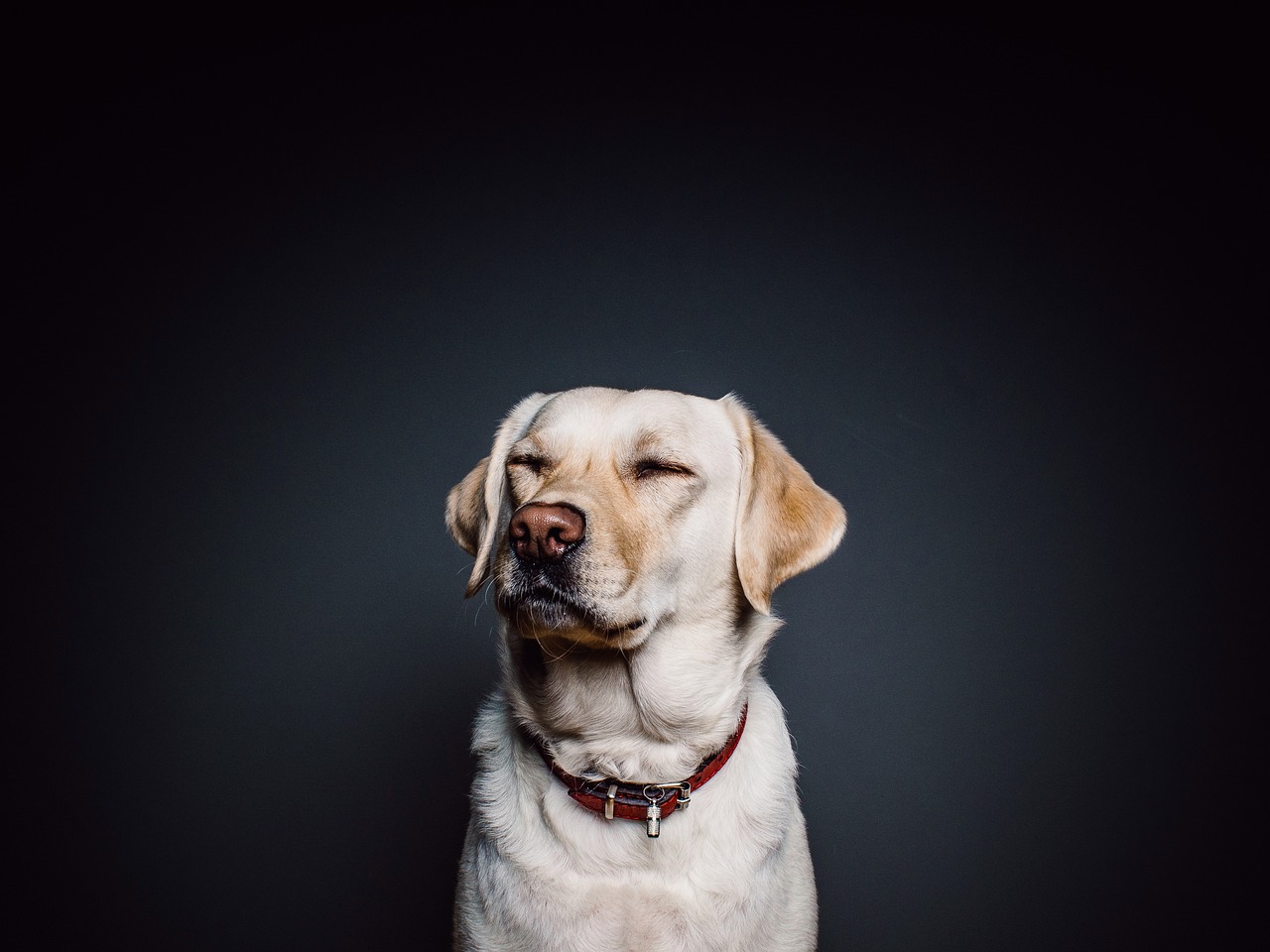
Step-by-Step Nail Grooming Process
Grooming your dog's nails doesn't have to be a daunting task, and with the right approach, it can be a pleasant experience for both you and your furry friend. Following a systematic step-by-step process can enhance safety and efficiency, ensuring that your dog remains calm and comfortable throughout the grooming session. Let’s break it down!
First and foremost, positioning your dog correctly is crucial. Whether your dog prefers to sit or lie down, make sure they are in a comfortable spot where you can easily access their paws. You might want to use a non-slip mat to keep them steady and secure. This will not only help your dog feel more at ease but also allow you to work without interruptions. Once you have your dog settled, it’s time to prepare for the trimming.
Next, you’ll want to gather all your tools and have them within reach. This includes your chosen nail clippers or grinders, some treats for positive reinforcement, and styptic powder just in case you accidentally cut too close to the quick. With everything ready, take a moment to calm your dog with gentle petting or soothing words. This is where creating a calm environment plays a significant role in the success of your grooming session.
Now, onto the actual trimming! It’s essential to use proper trimming techniques to prevent any injuries. Start by holding your dog’s paw gently but firmly, and examine the nails closely. Focus on trimming only a small portion of the nail at a time. If you're using clippers, aim for the tip of the nail, avoiding the quick, which is the sensitive part that can bleed if cut. If your dog has dark nails and you can’t see the quick, trim a little at a time until you see a light pink color. This method ensures a pain-free experience for your dog.
For those who prefer nail grinders, the process is similar but requires a bit more finesse. Gently press the grinder against the nail, allowing it to smooth out the edges without applying too much pressure. This method is particularly beneficial for nervous dogs, as it reduces the risk of splitting their nails while providing a polished finish. Remember, patience is key here; take breaks if your dog seems anxious or restless.
After you’ve completed the trimming, it’s important to check your dog’s nails and paw pads for any signs of injury or discomfort. Look for any bleeding or signs of pain. If you notice anything unusual, apply the styptic powder to stop any bleeding and consult your veterinarian if necessary. Following this, maintaining nail health becomes the next priority. Establish a regular grooming schedule, perhaps every 3-4 weeks, to keep those nails in check. Regular grooming not only helps keep your dog's nails short but also allows you to monitor their overall paw health.
In conclusion, grooming your dog's nails can be a breeze if done correctly. By following these steps, you’ll ensure a safe and enjoyable experience for both you and your furry friend. Remember, practice makes perfect, and over time, both you and your dog will become more comfortable with the process.
Here are some common questions that dog owners often ask about nail grooming:
- How often should I groom my dog's nails?
It's recommended to groom your dog's nails every 3-4 weeks, but this can vary depending on their activity level and nail growth. - What if my dog is afraid of nail clippers?
Try desensitization techniques by introducing the clippers gradually and rewarding your dog with treats to create positive associations. - Can I use human nail clippers on my dog?
It's best to use clippers specifically designed for dogs, as they are tailored to handle the thickness and structure of canine nails. - What should I do if I accidentally cut the quick?
Apply styptic powder to stop the bleeding, and if it doesn't stop, consult your veterinarian for further advice.
Positioning Your Dog
When it comes to grooming your dog's nails, proper positioning is absolutely crucial. Think of it like setting the stage for a performance; if your dog is comfortable and secure, the grooming process will go much smoother, and both you and your furry friend will have a much more pleasant experience. Start by choosing a quiet space where your dog feels safe and relaxed. This could be a favorite spot in your home, perhaps their bed or a cozy corner of the living room. Avoid areas with loud noises or distractions, as these can make your dog anxious and fidgety.
Next, consider whether your dog will be sitting or lying down during the grooming process. For smaller breeds, it might be easier to hold them in your lap or have them sit on a stable surface like a table. For larger dogs, having them lie down on a soft mat can help keep them calm. Regardless of the position, ensure that your dog is stable and secure. You don’t want them to wiggle or jump away while you’re trimming their nails, as this can lead to accidental injuries for both of you!
It’s also important to gently hold one of their paws in your hand, applying a light grip to keep it steady without causing discomfort. You might want to practice this hold before you start grooming, as it can help your dog get used to the sensation. If your dog seems nervous, you can use treats or soothing words to reassure them. Think of it as a bonding moment; the more relaxed they are, the easier it will be to get the job done.
In some cases, using a non-slip mat can help your dog feel more secure, especially if they are on a table or a slick surface. This simple addition can prevent any slipping or sliding, which can be unsettling for your pet. Here’s a quick rundown of some effective positioning tips:
- Choose a quiet and comfortable space.
- Decide if your dog will sit or lie down.
- Gently hold their paw to keep it steady.
- Use treats to create a positive association.
- Consider a non-slip mat for added security.
Once your dog is in the right position, take a moment to observe their body language. Signs of relaxation include a wagging tail, relaxed ears, and a calm demeanor. If they seem tense, it might be worth taking a step back and giving them a little more time to adjust. Remember, patience is key when it comes to grooming. By ensuring your dog is comfortable and well-positioned, you’re setting the stage for a successful and stress-free nail grooming session.
Q: How often should I trim my dog's nails?
A: Generally, every 3-4 weeks is a good rule of thumb, but it can vary depending on your dog's activity level and nail growth.
Q: What if my dog is afraid of nail clippers?
A: Start by desensitizing your dog to the clippers. Let them sniff and explore the clippers while rewarding them with treats to create a positive association.
Q: Can I use human nail clippers on my dog?
A: It's best to use clippers specifically designed for dogs, as they are made to handle the thickness and structure of canine nails.
Q: What should I do if I accidentally cut the quick?
A: If you cut the quick and your dog starts to bleed, apply styptic powder to stop the bleeding. If it doesn’t stop, consult your veterinarian.
Q: Is it better to use clippers or grinders?
A: It depends on your dog's comfort level. Grinders can be less intimidating for some dogs and provide a smoother finish, while clippers are quicker for others.
Trimming Techniques
When it comes to trimming your dog's nails, the right techniques can make all the difference between a smooth grooming session and a stressful one. First and foremost, take your time. Rushing through the process can lead to mistakes and, worse, injuries. Begin by holding your dog's paw gently but firmly, ensuring they feel secure. A relaxed dog is more likely to cooperate, so consider giving them a treat or two to create a positive atmosphere.
It's essential to avoid cutting into the quick, which is the sensitive part of the nail that contains blood vessels and nerves. If your dog has light-colored nails, you can easily see the quick, which appears as a pinkish area. However, if your dog has dark nails, it can be trickier. In this case, trim only the tip of the nail and gradually work your way back, taking small cuts. This incremental approach not only minimizes the risk of hitting the quick but also helps your dog become accustomed to the process.
Here are some additional techniques to consider while trimming:
- Use Proper Lighting: Ensure you have good lighting to clearly see the nail and avoid any accidents.
- Keep a Steady Hand: A steady grip on the clippers or grinder is crucial; practice makes perfect!
- Take Breaks: If your dog becomes anxious, take a break, offer some affection, and try again later.
After trimming each nail, it’s a good idea to reward your dog with praise or a small treat. This reinforces positive behavior and helps them associate nail grooming with pleasant experiences. If you notice any bleeding or if you accidentally cut the quick, don’t panic. Apply a styptic powder to the area to stop the bleeding. Always keep a first aid kit handy for such emergencies.
In conclusion, mastering the trimming techniques can transform your grooming routine from a daunting task into a bonding experience with your furry friend. Remember, patience and care are key. With practice, you'll both become pros at nail trimming!
Q: How often should I trim my dog's nails?
A: It generally depends on your dog's activity level and lifestyle. For most dogs, a trim every 3-4 weeks is ideal. However, active dogs that walk on hard surfaces may wear down their nails naturally and require less frequent trimming.
Q: What if my dog doesn't like having their nails trimmed?
A: If your dog is anxious about nail trimming, try desensitization techniques, such as introducing the clippers gradually and rewarding them for calm behavior. You can also consider professional grooming if necessary.
Q: Can I use regular human nail clippers on my dog?
A: While it's possible, it's not recommended. Dog nail clippers are specifically designed to handle the thickness and texture of canine nails, ensuring a cleaner cut and reducing the risk of splitting.
Q: What should I do if I accidentally cut the quick?
A: Apply styptic powder to the area to stop the bleeding and keep your dog calm. If bleeding persists or if you're concerned, consult your veterinarian.
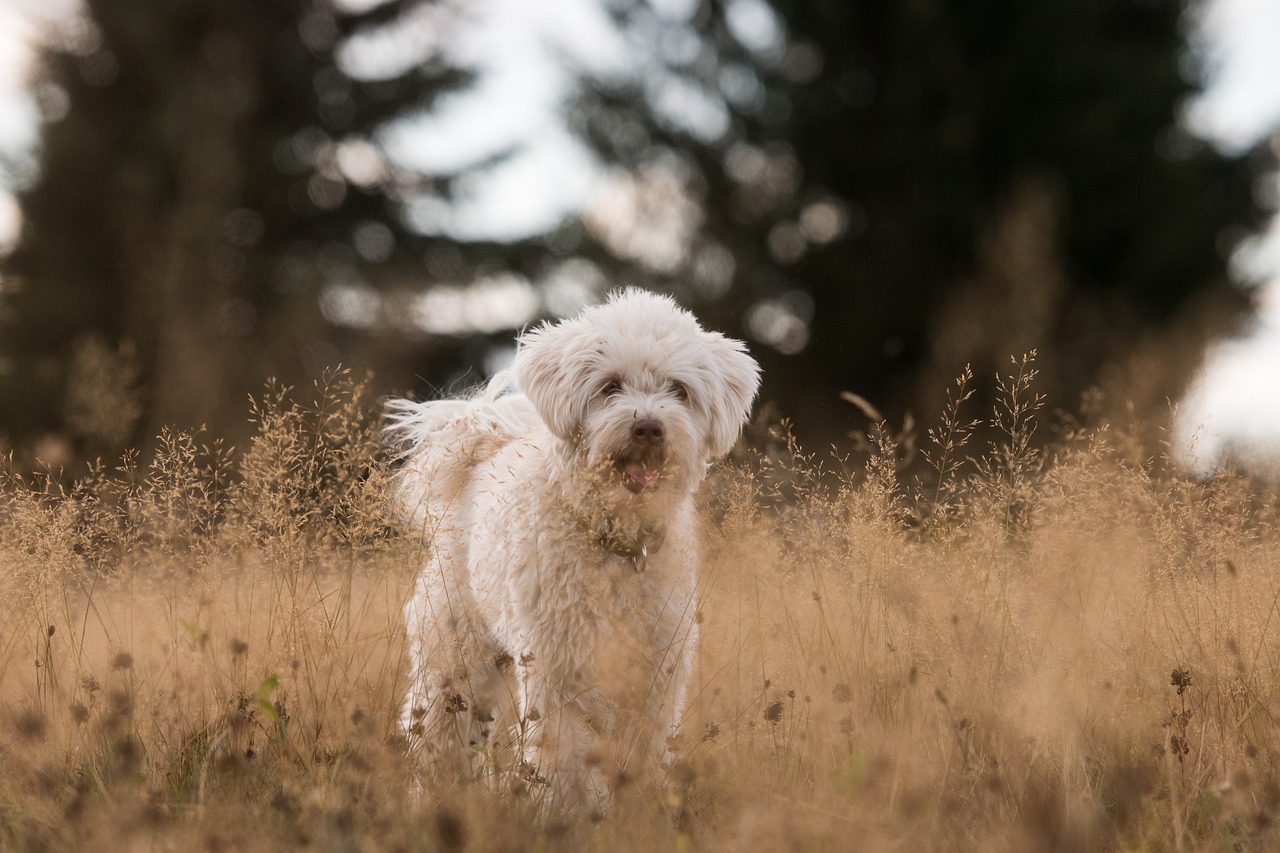
Post-Grooming Care
After you’ve successfully groomed your dog's nails, the care doesn’t stop there. In fact, is just as important to ensure your furry friend remains comfortable and healthy. First and foremost, you should always check your dog's nails and paw pads for any signs of injury. This is crucial because even the most careful grooming can sometimes lead to minor accidents. Look for any signs of bleeding, discomfort, or unusual behavior that might indicate pain. If you notice any issues, it’s best to consult your veterinarian for advice.
Once you’ve ensured that everything is in order, it’s time to focus on maintaining your dog's nail health. Regular grooming is key, and establishing a consistent schedule can make a world of difference. For many dogs, a grooming session every 3-4 weeks is ideal, but this can vary based on their activity level and how quickly their nails grow. In addition to regular trimming, consider using a paw balm to keep their paw pads moisturized and prevent cracking. This is especially important during harsh weather conditions, whether it’s the heat of summer or the chill of winter.
Another aspect of post-grooming care is to reward your dog for their good behavior during the grooming process. Positive reinforcement can help them associate nail trimming with a pleasant experience. You might offer them a treat or some extra playtime to create a positive connection. After all, who doesn’t love a little extra love after a grooming session?
Lastly, keep an eye on your dog’s overall behavior in the days following the grooming. If they seem particularly sensitive about their paws or you notice them limping or favoring a leg, it’s essential to investigate further. This can help you catch any potential issues early on and ensure your dog stays happy and healthy.
- How often should I trim my dog's nails? - Generally, every 3-4 weeks is recommended, but this can vary based on your dog's activity level and nail growth.
- What should I do if I accidentally cut the quick? - If you cut the quick and it starts to bleed, apply styptic powder to stop the bleeding and soothe the area. If the bleeding doesn’t stop, consult your veterinarian.
- Can I use human nail clippers on my dog? - It’s best to use clippers specifically designed for dogs, as they are tailored to handle different nail sizes and thicknesses safely.
- How can I make nail trimming less stressful for my dog? - Gradually desensitize your dog to the clippers, choose a calm time for grooming, and provide treats and praise during and after the process.
Checking for Injuries
After you’ve successfully groomed your dog's nails, it’s crucial to conduct a thorough inspection of their paws. This step is often overlooked, but it’s just as important as the grooming process itself. You want to ensure that your furry friend has not sustained any injuries during the trimming. Always take a moment to examine each nail and the surrounding area carefully.
Start by looking for any signs of bleeding or discomfort. If you accidentally clipped too far and hit the quick, your dog may react with pain or yelp. In such cases, it’s essential to stay calm and reassure your pet. Apply a styptic powder to stop any bleeding and gently comfort your dog to ease their anxiety. Remember, dogs can sense your emotions, so your calm demeanor will help them feel secure.
Next, check the paw pads for any cuts or abrasions. Sometimes, dogs can get small injuries that may not be immediately noticeable. Look for:
- Redness or swelling
- Excessive licking or chewing of the paws
- Visible cuts or foreign objects stuck in the pads
If you notice any of these signs, it may be time to consult your veterinarian. They can provide the necessary treatment to ensure your dog heals properly. Additionally, keeping an eye on their behavior post-grooming can also give you clues about their comfort level. If they seem hesitant to walk or are favoring a particular paw, it’s worth investigating further.
Lastly, maintaining a regular grooming schedule not only helps in keeping your dog’s nails at a healthy length but also makes it easier to spot any issues early on. By being proactive about their nail care, you can help prevent injuries and ensure your dog remains comfortable and happy.
Here are some common questions pet owners have regarding dog nail grooming:
- How often should I trim my dog's nails? - It depends on the dog's activity level and breed, but generally, every 3-4 weeks is recommended.
- What should I do if I accidentally cut the quick? - Apply styptic powder to stop the bleeding and comfort your dog.
- Can I use human nail clippers on my dog? - It's not recommended. Dog nail clippers are specifically designed for their nails and provide a safer cutting experience.
- What if my dog is scared of nail clippers? - Consider using desensitization techniques to help them associate the clippers with positive experiences.
Maintaining Nail Health
Maintaining your dog's nail health is not just about trimming; it's a comprehensive approach that ensures their overall well-being. Regular grooming sessions can help you keep an eye on their nails and paws, preventing potential issues before they arise. Think of it as a routine check-up for your furry friend, where you can catch any problems early on. But how do you ensure their nails stay healthy? Here are some essential tips:
First and foremost, establish a consistent grooming schedule. Depending on your dog's breed, activity level, and nail growth rate, you might need to trim their nails every few weeks. For instance, active dogs that walk on hard surfaces may naturally wear down their nails, while less active dogs might require more frequent trims. Keeping a calendar can help you stay organized and ensure you never miss a grooming session.
Next, consider using paw balm to maintain the health of your dog's nails and paw pads. Just like our skin, dogs' paws can become dry and cracked, especially in harsh weather conditions. Applying a nourishing paw balm can help prevent this, keeping their paws hydrated and comfortable. Look for balms that are specifically formulated for dogs, as they are safe and effective. Regular application, especially after walks, can make a significant difference.
It's also crucial to monitor your dog's diet. A balanced diet rich in vitamins and minerals plays a vital role in maintaining healthy nails. Ingredients like omega fatty acids can promote nail strength and prevent brittleness. If you're unsure about your dog's nutritional needs, consult your veterinarian for personalized advice. Remember, a healthy dog is a happy dog!
Lastly, always be vigilant for any signs of discomfort or injury. After grooming, take a moment to inspect your dog's nails and paw pads for any signs of bleeding, cracking, or irritation. If you notice anything unusual, don't hesitate to reach out to your veterinarian for guidance. By staying proactive and attentive, you can ensure your dog enjoys a pain-free and joyful life.
- How often should I trim my dog's nails? It depends on your dog's activity level and nail growth. Generally, every 3-4 weeks is a good rule of thumb.
- What should I do if I accidentally cut too short? If you cut into the quick and it bleeds, apply styptic powder to stop the bleeding. If the bleeding doesn't stop, consult a vet.
- Can I use human nail clippers on my dog? It's not recommended. Dog nail clippers are designed specifically for their nails and provide a safer and cleaner cut.
Frequently Asked Questions
- Why is nail care important for my dog?
Nail care is essential for your dog's health because long nails can cause pain, mobility issues, and even injuries. Regular grooming helps prevent these problems and keeps your furry friend comfortable.
- What tools do I need for grooming my dog's nails?
You will need a few essential tools for effective nail grooming, including nail clippers (guillotine or scissor style), a nail grinder, and styptic powder in case of any accidental cuts. Having the right tools makes the process smoother and safer.
- How do I choose the right nail clippers for my dog?
Selecting the right clippers depends on your dog's size and nail thickness. Guillotine-style clippers are great for small to medium dogs, while scissor-style clippers offer better leverage for larger breeds. Choose the one that feels comfortable for you to use!
- What are the benefits of using a nail grinder?
Nail grinders provide a smooth finish and reduce the risk of splitting nails, making them an excellent option for nervous dogs. They can also help you avoid the quick, ensuring a safer grooming experience.
- How can I prepare my dog for the grooming process?
Preparing your dog involves familiarizing them with the grooming tools and creating a calm environment. Desensitization techniques, like introducing the clippers gradually, can help your dog associate grooming with positive experiences.
- When is the best time to groom my dog's nails?
The best time to groom your dog is when they are calm and relaxed, such as after exercise or playtime. This makes the process easier for both you and your furry friend.
- What should I do during the nail trimming process?
During trimming, ensure your dog is in a comfortable position and focus on making small cuts. Avoid cutting into the quick, which is the sensitive part of the nail, to ensure a pain-free experience.
- How do I check my dog for injuries after grooming?
After grooming, always inspect your dog's nails and paw pads for any signs of injury, bleeding, or discomfort. Address any issues promptly to ensure your dog's well-being.
- How can I maintain my dog's nail health post-grooming?
To maintain nail health, establish a regular grooming schedule and consider using paw balm to prevent cracking and discomfort. Consistency is key to keeping your dog's nails healthy!


